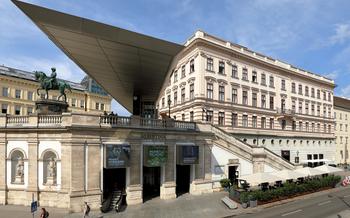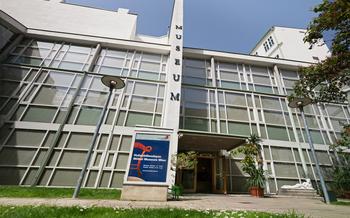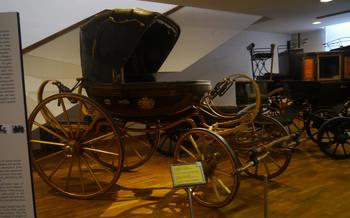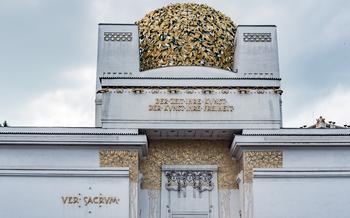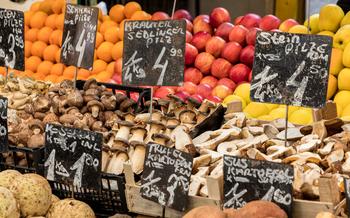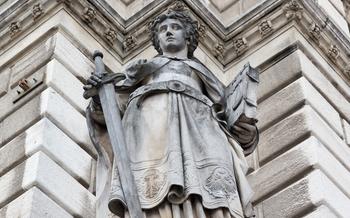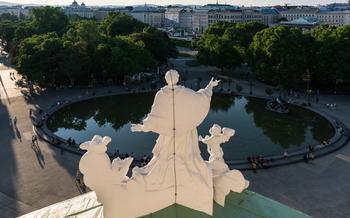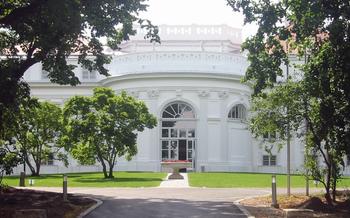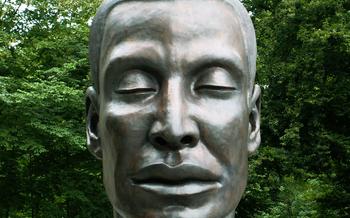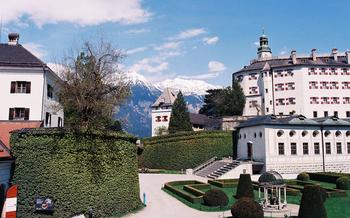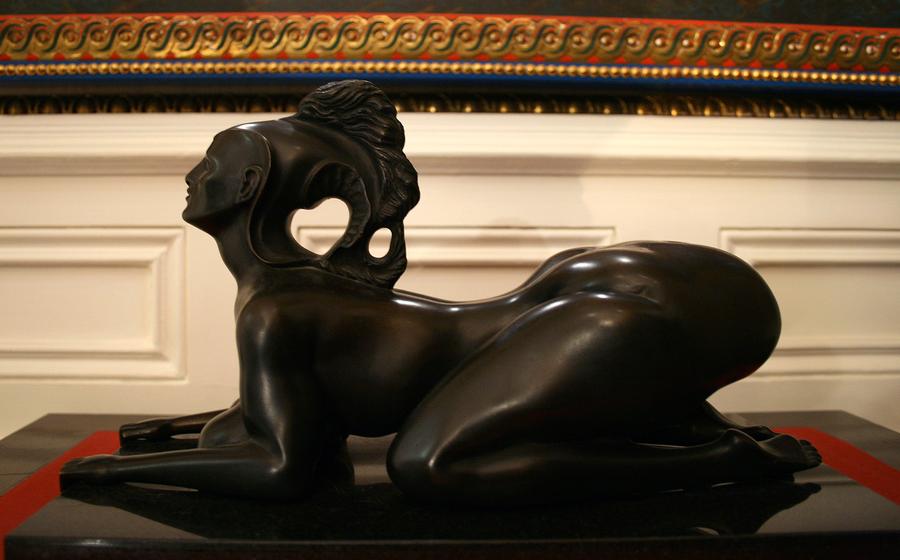
Ernst Fuchs Museum
- Journey into the Fantastic
- Exploring the Museum
- Surreal Landscapes
- Mythical Creatures
- Biblical Scenes
- Portraits and Self-Portraits
- The Garden of Eden
- Educational Programs:
- Museum Shop:
Journey into the Fantastic
Ernst Fuchs's art is characterized by its meticulous attention to detail, vibrant colors, and imaginative compositions. His paintings, sculptures, graphics, and tapestries showcase his unique style of Fantastic Realism, blending surrealism with classical techniques. Visitors to the Ernst Fuchs Museum can explore a diverse range of the artist's works, including early sketches, oil paintings, watercolors, and sculptures. The museum's collection provides a comprehensive overview of Fuchs's artistic journey, from his early influences to his later masterpieces.
Fuchs's works often depict fantastical creatures, mythical scenes, and dreamlike landscapes. His art invites viewers to embark on a journey into the realm of the imagination, where reality and fantasy intertwine. Through his meticulous attention to detail and vibrant colors, Fuchs creates a sense of depth and realism that draws viewers into his fantastical world. His works have been exhibited worldwide and are held in prestigious collections around the globe, testament to his enduring impact on the art world.
Exploring the Museum
The Ernst Fuchs Museum is meticulously organized into thematic sections, taking visitors on an immersive journey through the artist's creative universe. Each section delves into a specific aspect of Fuchs's artistic exploration, providing a comprehensive understanding of his unique style and artistic development. Interactive displays and informative panels accompany the artworks, offering visitors a deeper insight into Fuchs's influences, techniques, and the stories behind his creations.
Guided tours are available in several languages, led by knowledgeable and passionate docents who bring Fuchs's art to life. These tours offer an exclusive opportunity to learn about the artist's life, his inspirations, and the significance of his works within the broader context of art history. Whether exploring the museum independently or joining a guided tour, visitors are guaranteed a captivating and enriching experience, delving into the depths of Fuchs's surrealist masterpiece.
Surreal Landscapes
Fuchs's paintings often depict dreamlike landscapes, blending elements of reality and fantasy. His landscapes feature vibrant colors, intricate details, and a sense of depth and perspective. Visitors can admire Fuchs's surreal landscapes in the museum's permanent collection.
Fuchs's landscapes are characterized by their surreal and dreamlike quality. He often depicted fantastical creatures, mythical scenes, and dreamlike landscapes. His landscapes are often populated by strange and wonderful creatures, such as unicorns, centaurs, and dragons. These creatures often interact with humans, creating a sense of wonder and mystery.
Fuchs's landscapes have been compared to the works of Salvador Dalí and other surrealist masters. Like Dalí, Fuchs was fascinated by the subconscious mind and the world of dreams. His landscapes often reflect his own inner thoughts and feelings, creating a sense of emotional depth and resonance.
Mythical Creatures
In the realm of Fuchs's art, mythical creatures abound, each imbued with a unique presence and personality. Unicorns, with their glistening manes and piercing eyes, seem to have stepped straight out of a fairy tale. Centaurs, half-human, half-horse, embody the fusion of nature and humanity. Dragons, with their scales shimmering in shades of emerald and gold, evoke a sense of awe and wonder.
These mythical beings are not mere figments of Fuchs's imagination; they serve as allegories and symbols, representing various aspects of the human condition. Through them, Fuchs explores themes of duality, transformation, and the interconnectedness of all living things.
Visitors to the Ernst Fuchs Museum can encounter these mythical creatures in a variety of forms, from paintings and sculptures to tapestries and stained glass windows. In each work, Fuchs's mastery of detail and vibrant use of color bring these fantastical beings to life, inviting viewers to enter a realm where the boundaries between reality and imagination blur.
Anecdote:
Fuchs's fascination with mythology and folklore is evident in his numerous depictions of mythical creatures. In one painting, a centaur is depicted galloping through a forest, its human torso adorned with intricate tattoos and its horse-like body radiating a sense of power and freedom. In another work, a unicorn stands poised at the edge of a tranquil lake, its horn glowing with an ethereal light. These mythical creatures, with their captivating presence and symbolic significance, continue to enchant and inspire viewers to this day.
Biblical Scenes
Fuchs's art is not limited to fantastical creatures and dreamlike landscapes; it also delves into the realm of biblical narratives. His unique surrealist style breathes new life into traditional religious stories, offering a fresh perspective on familiar scenes. Fuchs's biblical paintings are characterized by their vibrant colors, intricate details, and imaginative interpretations.
One of the most striking aspects of Fuchs's biblical works is his ability to capture the essence of the stories while simultaneously infusing them with his own unique vision. His paintings depict biblical figures as real, relatable individuals, often highlighting their emotions and inner struggles. Through his art, Fuchs invites viewers to contemplate the deeper meanings and relevance of these ancient tales in a contemporary context.
Visitors to the Ernst Fuchs Museum can explore a diverse collection of Fuchs's biblical paintings, ranging from depictions of the Creation and the Garden of Eden to scenes from the Old and New Testaments. Each work offers a unique perspective on the biblical narrative, encouraging viewers to engage with the stories on a deeper level. Fuchs's biblical paintings have been praised for their originality, emotional depth, and ability to transcend religious boundaries and resonate with viewers from all walks of life.
Portraits and Self-Portraits
In addition to his fantastical landscapes and mythical creatures, Fuchs also created a series of compelling portraits and self-portraits. His portraits capture the essence of his subjects, often revealing their inner thoughts and emotions through their expressive eyes and gestures. Among his most famous portraits is that of his wife, which exudes a sense of tenderness and admiration. Fuchs's self-portraits, on the other hand, provide a glimpse into his own psyche and artistic journey. These introspective works reveal a complex and multifaceted artist, constantly exploring the depths of his own imagination and emotions. Through his portraits and self-portraits, Fuchs invites viewers to contemplate the nature of identity, self-expression, and the human condition.
The Garden of Eden
Strolling through the courtyard of the Ernst Fuchs Museum, visitors are transported to a tranquil oasis inspired by the biblical Garden of Eden. Lush vegetation, vibrant flowers, and carefully placed sculptures create a serene and contemplative atmosphere. The garden invites visitors to pause and reflect on the beauty and harmony of nature.
Visitors can wander along winding paths, discovering hidden corners and sculptures that seem to emerge from the landscape itself. The garden is a testament to Fuchs's love of nature and his ability to capture its essence in his art. The tranquil ambiance of the Garden of Eden provides a respite from the bustling city and encourages visitors to connect with their inner selves.
The garden is a popular spot for visitors to relax, meditate, or simply enjoy the beauty of Fuchs's art. It is a place to find inspiration, peace, and a deeper appreciation for the natural world.
Educational Programs:
The Ernst Fuchs Museum recognizes the importance of art education and offers a diverse range of educational programs tailored to students and adults of all ages. These programs aim to inspire creativity, foster appreciation for art, and provide a deeper understanding of Fuchs's unique artistic style.
Visitors can participate in guided tours led by experienced educators who share insights into Fuchs's artistic journey, techniques, and influences. These tours are available in several languages, ensuring that visitors from around the world can engage with Fuchs's art on a deeper level.
The museum also offers workshops and lectures that delve into specific aspects of Fuchs's work, such as his use of color, symbolism, and composition. These workshops are led by practicing artists and art historians who provide hands-on experiences and expert knowledge.
For students, the museum offers educational programs that align with school curricula and encourage critical thinking and creativity. These programs include interactive activities, discussions, and hands-on projects that allow students to explore Fuchs's art in a meaningful way.
The Ernst Fuchs Museum's educational programs are a valuable resource for students, art enthusiasts, and anyone interested in learning more about the fascinating world of Fantastic Realism. Whether through guided tours, workshops, or lectures, the museum provides opportunities for visitors to engage with Fuchs's art in a dynamic and educational way.
Museum Shop:
The Ernst Fuchs Museum houses a well-stocked shop where visitors can purchase a variety of souvenirs to commemorate their visit. The shop offers a wide range of items, including books showcasing Fuchs's art, high-quality prints and posters of his most famous works, and postcards featuring his unique surrealist imagery. Visitors can also find a selection of unique gifts and home décor items inspired by Fuchs's art. Whether you're looking for a special memento of your visit or a gift for a fellow art enthusiast, the Ernst Fuchs Museum shop has something for everyone. The shop also offers a selection of books and catalogues that provide in-depth insights into Fuchs's life, work, and artistic techniques. These publications offer a valuable resource for art historians, collectors, and anyone interested in learning more about this remarkable artist.
